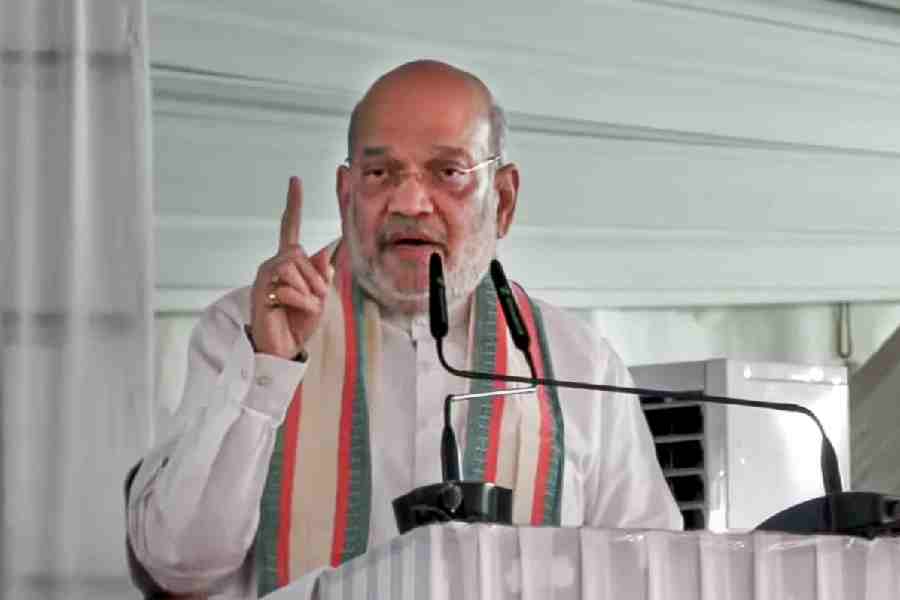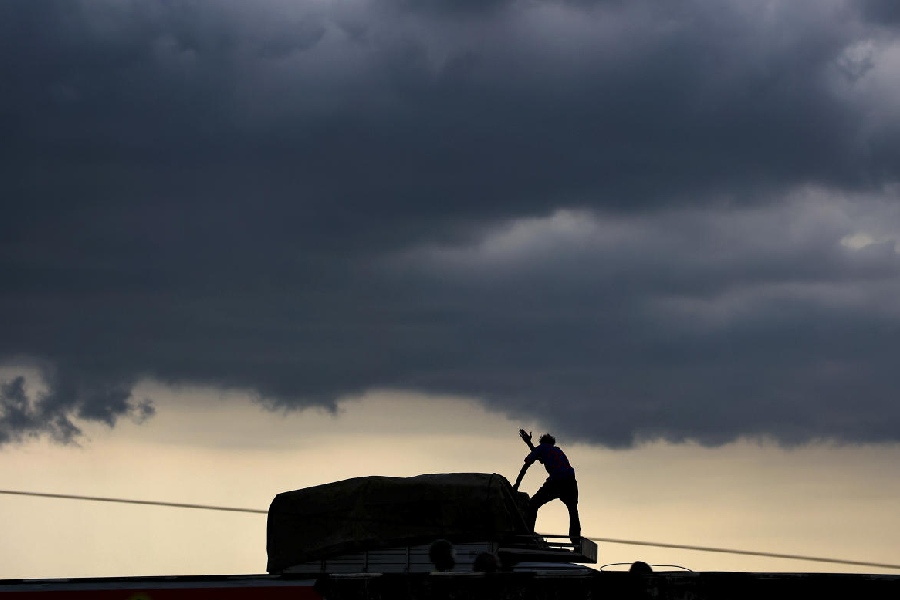 |
| The walls of the city that Akbar built in old Srinagar |
Srinagar, Feb. 12: The ruins of a city that emperor Akbar built in the heart of old Srinagar is ready to be resurrected as a tourist attraction after centuries of neglect.
The state government has begun renovating whatever survives of Naager Nagar, established by the 16th-century Mughal emperor around the Koh-e-Maraan or Hari Parbat hill and later embellished by other rulers including Akbar’s great-grandson Dara Shikoh.
Among the structures to be restored is a 4.75km-long but nearly crumbled wall that winds around the hill. The government plans to build a water park, a ropeway, art galleries and restaurants too.
“The project will cost us Rs 26 crore. The work has already begun,” state tourism director Farooq Ahmad Shah said.
The area epitomises Kashmir’s composite culture and Akbar’s famed tolerance. It is home to the shrine of the famous saint, Sheikh Hamzah Makhdoomi, and the Sharika temple. A Sikh gurdwara too exists near its outer wall.
Officials said the planned ropeway would take pilgrims to the Sheikh’s shrine atop the hill.
Old Srinagar is a separatist hub, where stone-throwing is common. The authorities hope that bringing the area on the tourist map will help boost its economy.
Akbar had begun building the wall, which is five to seven feet wide, in the late 16th century. The purpose was to settle nobles and soldiers in the walled city to prevent confrontation with the local population.
The non-profit Indian National Trust for Art and Cultural Heritage prepared the project blueprint. The convener of its Kashmir chapter, Saleem Beig, said the various Mughal rulers — who gave Kashmir its well-known tag of “Paradise on Earth” — had built several palaces and other structures in Naagar Nagar.
“Many of the buildings no longer exist but several Mughal structures, including a hamaam (royal bath), a mosque and a sarai (inn) built by Dara Shikoh, still exist and are being renovated,” he said.
In 1808, the Valley’s then Afghan rulers had built a huge fort atop the hillock that offered a panoramic view of the old city. The security forces occupied it for 17 years till 2007 to watch the city. After the forces were shifted, the then state government of Ghulam Nabi Azad renovated the fort.
Beig said the project envisages creating infrastructure for a light-and-sound show inside the fort, where the history of Srinagar would be narrated from the Mughal era onwards.
“We are also building a water park near the area’s periphery, along the banks of the Nageen lake (a part of the Dal lake), to attract children,” he said.
Kashmir has for sometime been looking back to its Mughal history. Chief minister Omar Abdullah had two years ago begun efforts to make the 84km Mughal Road, a dirt track that Akbar’s army had marched up in 1586 to conquer the Valley, fit for motor cars.










